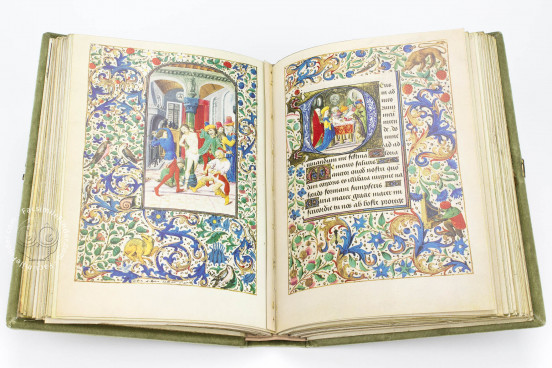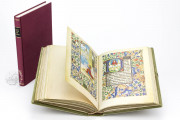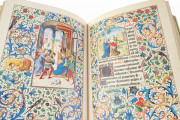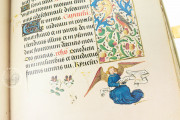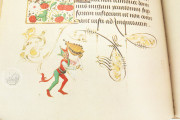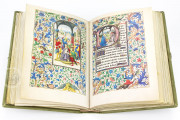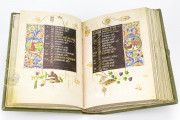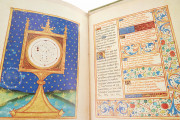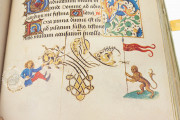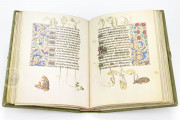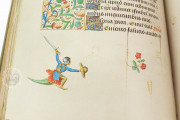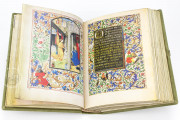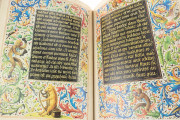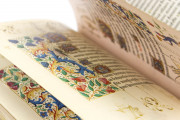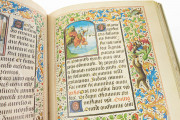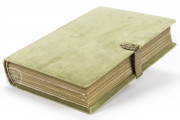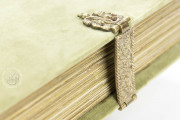This Book of Hours belonged to the daughter of Charles the Bold, Mary of Burgundy. It was a gift made by Marguerite of York to Mary of Burgundy, her stepdaughter. Made in a period of great production of precious devotional manuscripts in France and Netherlands, this manuscript is decorated with high quality miniatures and scrollwork, representative of the splendor of the Burgundian court.
The famous Book of Hours contains 378 pages, most of which decorated. The calendar is of special note because of the text written in gold and silver over a black background, which provides the book with a rare and elegant layout.
20 full-page illuminations mark the major divisions of the book of prayers; the miniatures portray vivid scenes of the everyday life, thus giving modern viewers a glimpse of the life in the Burgundian period. Ornamental borders, hybrids, and imaginative figures decorate the margins.
The Masters of the Book of Hours of Mary of Burgundy
Considered among the most famous manuscripts made in the late Middle Ages, the Book of Hours of Mary of Burgundy was originally designed for Charles the Bold, Duke of Burgundy. It was meant to function as a book of mourning, but the copy now kept in Vienna received a rich and exuberant decoration when, in 1477, the book was redesigned for Mary of Burgundy, Charles’s daughter.
The book of hours was refashioned in occasion of her wedding with Maximilian of Austria. Surely more than one illuminator were at work for the completion of this splendid manuscript. 20 full-page miniatures along with 16 smaller miniatures were realized by such famous illuminators as the Master of Mary of Burgundy, Willelm Vrelant, and Simon Marmion.
Window Miniatures and Sill Life
This devotional manuscript is well known especially because of its window miniatures, in which a painted window is opened on the scene as if looking outside from an interior space. One illumination of this kind (fol. 14r) shows a woman, probably to be identified with Mary of Burgundy or Margaret of York, her stepmother.
The elegant woman sits at the window reading the prayer book. Jewels and red carnations rest on the ledge, while the window is opened on the choir of a Gothic church where the Virgin and Child are enthroned. The quality of the still life and the shimmering effects of the reflective surfaces enhance the preciousness of the manuscript.
The illuminations provide modern viewers with a glimpse of the Burgundian courtly life. They show how the owners of the book would have been entertained and pleased by the refinement of the landscapes, the elegant and fashionable figures portrayed in the book, and even by the many whimsical figures that populate the margins. Secular and spiritual decorations were unified in devotional books reflecting the unity of the holy and the profane also found in the society of the time.
We have 1 facsimile edition of the manuscript "Hours of Mary of Burgundy": Das Stundenbuch der Maria von Burgund facsimile edition, published by Akademische Druck- u. Verlagsanstalt (ADEVA), 1969
Request Info / Price
